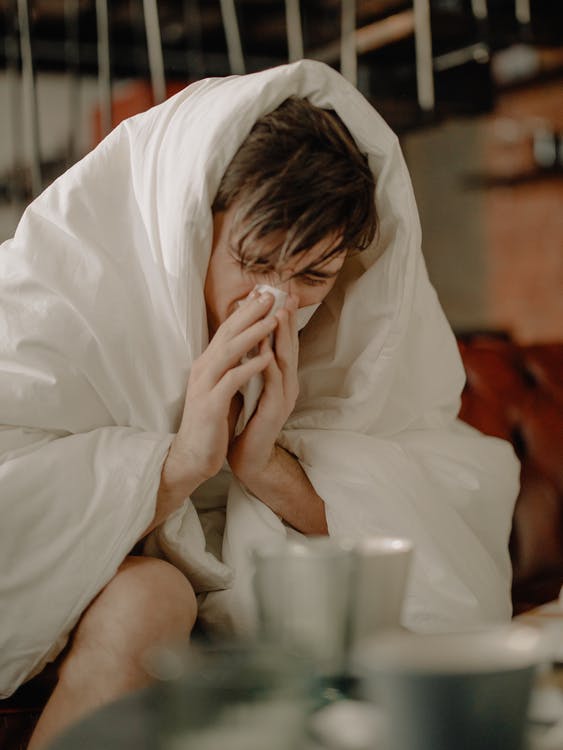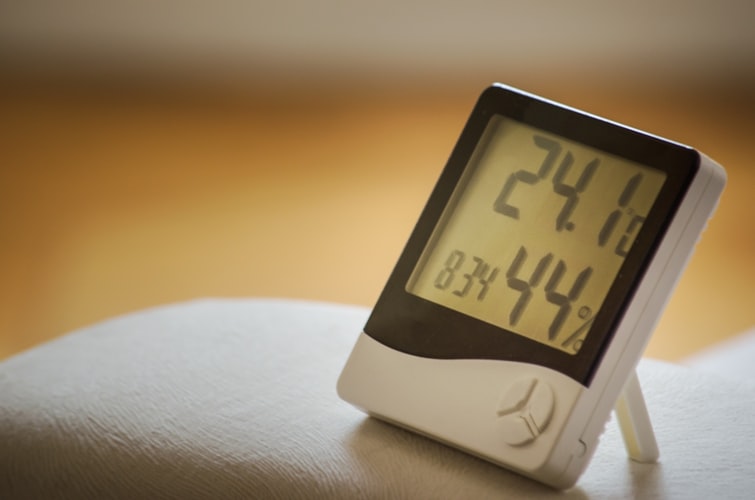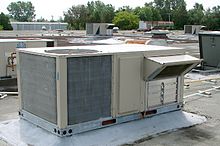The key element of a healthy life is a clean, lively house environment. On the contrary, a sick, dirty, and damp home can be toxic to human health. Depending on the severity of dirtiness and the sensitivity of the ones living inside, the symptoms of a “sick home” vary greatly. But the most common symptoms can be categorized into the following:
- Respiratory Symptoms – asthma, allergy, sinusitis, congestion
- Cognitive Symptoms – sleep apnea, recurrent headaches, loss of concentration
- CNS Symptoms – agitation, depression
- Physical Symptoms – stomach distress, muscle pain, fatigue, rashes, sore throat
The following reasons contribute to the triggering of allergies and irritations. These need to be controlled to assure the development of a healthy, vibrant home:
1. Your Addiction to Air Fresheners
Air fresheners like scented candles, oil diffusers, and scented sprays contain phthalate chemicals. Your obsession with a good-smelling house could be seriously affecting your health. The health risks of phthalates are worrying as it is a synthetic chemical that interferes with the natural mechanism of hormones within the human body by disrupting the human endocrine system.
Solution
The safest way to freshen your home is by simply adding fresh flowers, opening windows, and using natural essential oils.
2. Increased Indoor Humidity
Increased humidity, i.e., above 60%, is considered a sick home and can cause a breeding ground for molds. High humidity level causes the spread of molds behind the walls and thus affects the drywall. Molds are responsible for the excessive amount of health diseases ranging from sinusitis to nervous system damage. Also, dust mites develop because of high humidity levels, which cause allergic reactions, stomach diseases, sleep disturbance, etc.
Reminder
Humidity should not be higher than 60% and neither be too low, i.e., below 40%, as it will lead to respiratory issues.
How to Control Humidity Levels at Home?
- Look for a dehumidifier if needed.
- Practice good ventilation by opening windows whenever possible.
- Fan vents are a good option while showering and cooking.
- Buy a humidity monitor, which is best to control the humidity in the desired ranges (from 40 to 60%).
3. Your Kitchen is Full of Plastic
Bisphenol A (BPA) is an industrial chemical often found in plastic storage containers. Plastic is bad for the human body as it can leach BPA into your food items upon reheating or refilling when the leftovers are still warm. Resistant plastic containers made of polycarbonate also contain BPA, which is toxic to the human body as it interferes with natural body hormones. It also increases the risk of developing cancer and diabetes.
Examples of polycarbonate plastics items are reusable water bottles, drinking cups, beverage mugs.
Solution
- Restrict the use of plastic as much as possible.
- Go for the glass storage containers or stainless steel water bottles.
4. Excessive Dust Aggregation
Besides being a nuisance, dust acts as a carrier for irritating dust mites, which can disturb the nasal passage and eyes. Studies show that dust mites affect the human immune system by weakening it with time. One Recent Study interlinks the dust with gaining weight. Not just this, but the dust attracts debris from outside. These pesticides are noxious to health as they may affect our central nervous system.
How to Control Dust Aggregation?
- Practice cleaning the filter of your vacuum and vacuum your house often.
- Install HEPA – high-efficiency particulate air filters – in your heating and cooling system (HVAC) to control the spread of dust.
- Avoid wearing outdoor shoes in the house. Also, wipe off the animal paws before they enter the house.
- Wash curtains, bedsheets, and stuffed animals more often.
5. Wall-to-Wall Carpeting in Your Home
Wall to wall carpeting can be a source of all kinds of contaminants if enough cleaning measures are not taken. Carpets attract dust and pet dander within and thus cause allergic symptoms.
Cleaning Measures for Wall-To-Wall Carpeting
- Remove shoes before walking through the carpets; otherwise, you can trace all the outdoor contaminants like dust, pesticides, and heavy metal all over the carpet.
- Wash your rugs and carpets regularly and vacuum them often.
6. You Do Not Have Indoor Plants
Houseplants reduce air pollution and also freshen up the indoor area. Carbon monoxide, a poisonous gas, can be removed from the environment by gardening the plants like English Ivy, Gerbera Daisy, Bamboo Palm, and Chinese Evergreen.
Solution
Build your interest in home gardening for achieving a fresh and bright home. Plant some indoor greenery for the detoxification of your house.
7. Improper Ventilation in your Kitchen
If you have a gas stove, then there is bad news for you. Gas stoves raise the level of noxious fumes while cooking without you even knowing. The fumes are toxic because of the release of the deadly gas carbon monoxide.
Even the electric stoves are not clear either. Cooking on an electric stove will generate fumes and fine particles that decrease the quality of environmental air.
Guide for Proper Ventilation in your Kitchen
Assure the installation of hood vents and large windows for proper ventilation and the accumulation of dangerous gases.
Reminder: The hood vent should be ideally vented outside.
8. Your Laundry Room Smells Good
If you are obsessed with using scented detergents, fabric softener, and dryer sheets for the fresh smell of your laundry, then you have a double chance of getting toxins on your hands. These scented products contain phthalates and other toxic chemicals that are harmful to human health on a long-term basis.
Solution
Always go for the product with fewer ingredients and the ones that do not have the words “fragrance,” “perfume,” or “perfum.” Written on it. Otherwise, these items will poison the air inside your home.
9. Ultra Tight Sealing
Due to the energy-efficiency movement, most houses are built ultra-sealed. This restricts any sort of fresh outdoor air from entering the house. No doubt, this is an excellent step for saving on electricity bills, but on the other hand, it is highly affecting the health of the people living in the house.
In most cases, the indoor air is way dirtier than the outdoor air. Therefore, you should have some space for the outdoor, fresh air to come inside.
How to Reduce the Harmful Effects of a Tightly Sealed Home?
- If possible, open windows and doors for natural ventilation.
- Go for mechanical ventilation if, naturally, ventilation is not enough. Install air-to-air heat exchange.
- You can use fan vents to exhaust the indoor air while cooking and bathing.
10. Water Damage
Most houses have experienced water damage at some point. It may be because of a leaky window or basement flood. The health of your home is greatly reduced by water damage.
The signs of water damage include cracked paint on walls and ceilings, soft walls or ceilings, warped floor, white mineral deposits of the basement floor.
Solution
If you spot water damage, contact the professional for better care as early as possible. This needs to be cleaned up before it attracts molds.
11. Asbestos is used as Building and Installation Material
If you are living in a house that was built in 1920-1978, it is more likely that you are exposed to asbestos, as it was the most commonly used building and insulation material back then.
Short-term exposure to asbestos is not toxic, but you may develop breathing issues, increased chances of cancer, and lung disorders if inhaled in excessive amounts.
Solution
Upon its identification, call for specially trained and licensed contractors to remove asbestos.
12. Use of Lead Paints
In most houses constructed before 1978, lead paints were used, which may result in the development of lead poisoning. Young children are more prone to lead toxicity.
Therefore, always test for lead paints before shifting to an older house. Talk to your doctor for blood tests to check the lead levels in the blood of your child.
13. Moisture Intrusion
This term is used for any water, whether coming from inside or outside the house. Water, even in small quantities, provides the breeding ground for molds. If it’s coming from outside, it will cause water damage behind the walls and ceilings. It may also occur because of plumbing leaks indoors.
Also, condensation on windows, when the outside air is cooler and drier than the indoor air, eventually causes the generation of molds.
How to Avoid Moisture Intrusion?
- Maintain your house well. Regularly check the outside of your home for any holes or leaks.
- Maintain the indoor humidity levels to reduce the chances of condensation.
- Watch the signs of dripping from the tabs or sinks.
- Check your home’s draining system, whether maintained well or not, to properly divert the rainwater.
14. Heating and Cooling System (HVAC)
The biggest cause of a sick home is its HVAC. When the air-conditioning works, it may leave some airdrops within the ducts, which becomes the perfect place for the multiplication of mold and bacteria.
Respiratory symptoms including asthma, allergy, cough, and headache are mostly triggered by bacterial growth.
Solution
- Ask for a professional to clean the air ducts of your HVAC once every year.
- Service your HVAC for better productivity.
Conclusion
Avoid unhealthy habits and always keep your house clean to avoid getting sick. And if you have older people, young children, or someone with chronic illness in your home, you need to pay special attention.
Shop smart, proper ventilation, timely maintenance, and cleaning with care are a few basic guidelines for making your household healthy. Follow all the ways we mentioned above to keep yourself and your loved ones healthy and happy.






